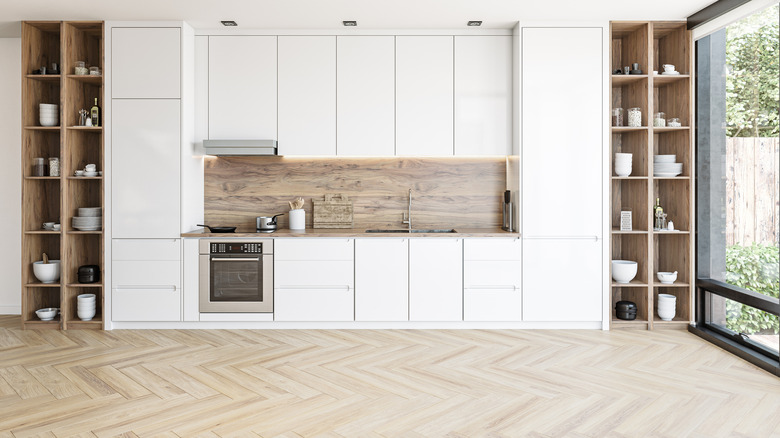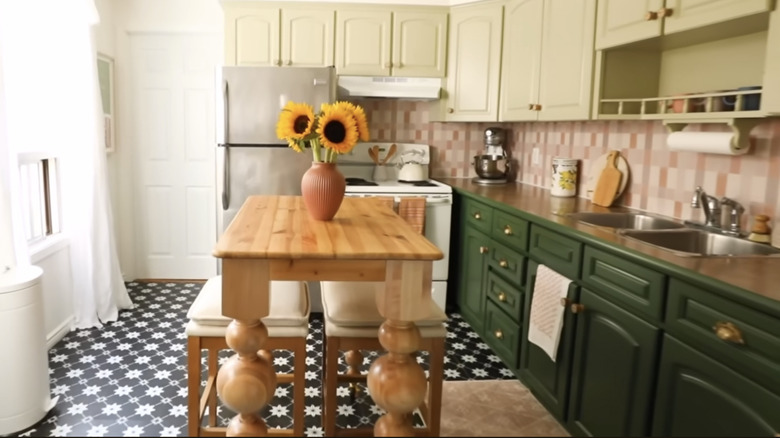The Affordable Way To Upgrade Kitchen Floors (Without Tools Or Installation)
When you reach a point where you need or want a home upgrade, you have to take a lot of factors into consideration — but the biggest hurdles are usually budget and skill. The core questions are: Do you have the funds to take on this project, and can you save money by doing it yourself? Since we aren't all walking around able to tap into our inner contractor, the goal is to find a way to get the job done as easily and effectively as possible.
Peel-and-stick vinyl flooring has become a favorite for anyone who wants to upgrade a kitchen floor without tools, contractors, or the price tag of traditional renovations. The main reason for its popularity is the sheer variety of styles available. These products come in both tile and plank formats, giving you the choice between a grid-like finish or a long, seamless look that feels like hardwood. That flexibility makes it easy to find something that fits your kitchen's size and layout.
If you're covering a small galley kitchen, individual tiles might make more sense, whereas for open layouts, planks can stretch the room and create a continuous flow. This variety ensures that renters and homeowners alike can affordably reinvent their kitchen backsplashes or match their floors to their cabinets and overall aesthetic without being locked into permanent choices. Vinyl flooring was something nearly every kitchen had back in the 1980s, and it seems to have made a resurgence, but in a much more convenient and affordable way.
Durability meets renter-friendly flexibility
Design freedom is another major selling point, as peel-and-stick options are produced in countless colors, patterns, and finishes. Instead of being limited to the few neutral shades offered at many big-box stores, you can experiment with something more personal.
While peel-and-stick vinyl flooring is known for being budget-friendly and easy to install, its durability is what keeps people coming back to it as a practical solution. Modern vinyl is far more resilient than it once was, with many brands producing planks and tiles that can withstand daily wear and tear in busy kitchens for several years. They resist dents and scratches from appliances or dropped utensils, and many are water-resistant or fully waterproof, which means spills won't warp or stain them the way wood or porous stone might. For kitchens that see constant foot traffic, this reliability makes the product feel far from "cheap," even if the price tag says otherwise.
Renters in particular benefit from the flexibility. Because peel-and-stick flooring doesn't require adhesives that damage the subfloor, it can be removed cleanly when it's time to move out. Some products are even marketed as "repositionable," which means you can lift and reset tiles if you don't place them perfectly the first time. You don't have to be as wary about the design mistakes you should avoid with your kitchen floors, because you can fix them much more easily. That kind of forgiveness makes the installation process less intimidating, especially for first-timers. Win-win all around.


